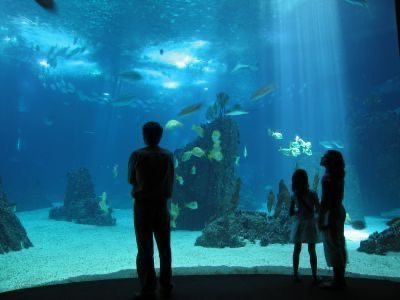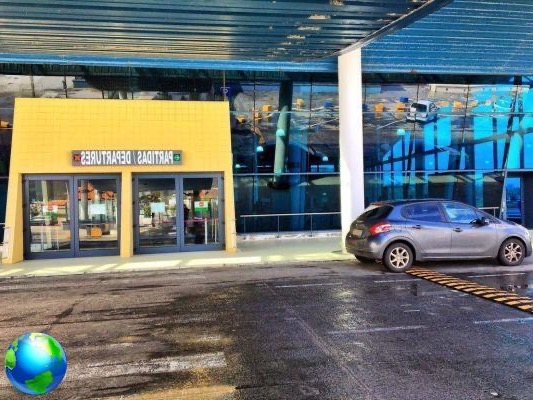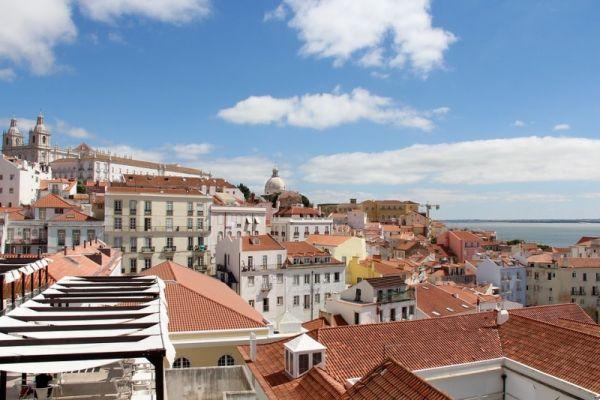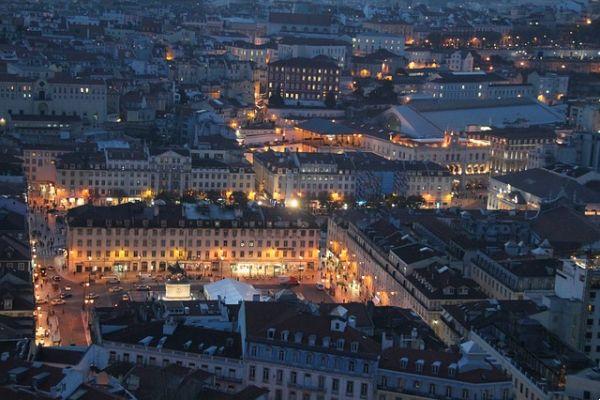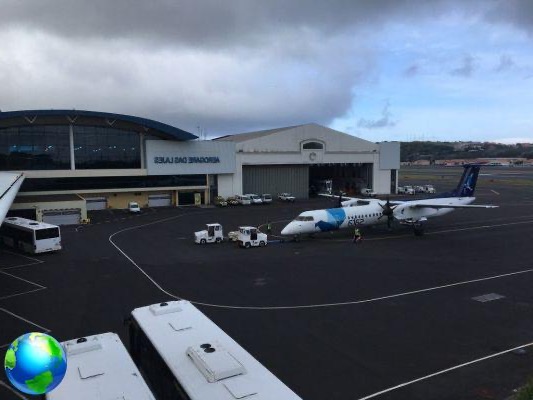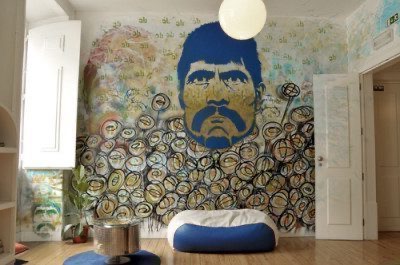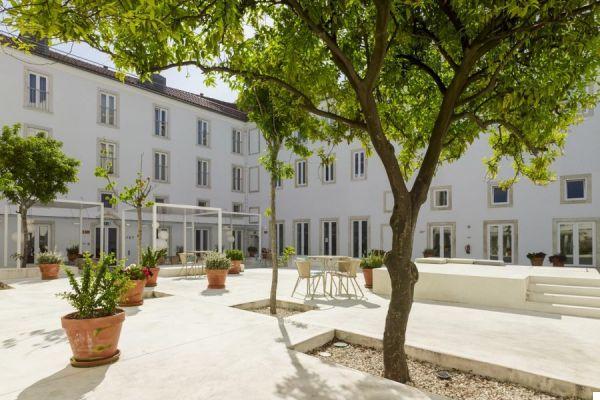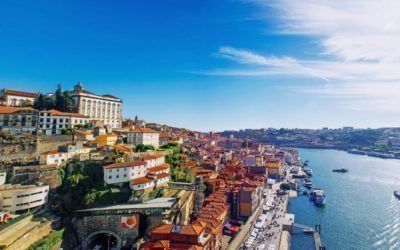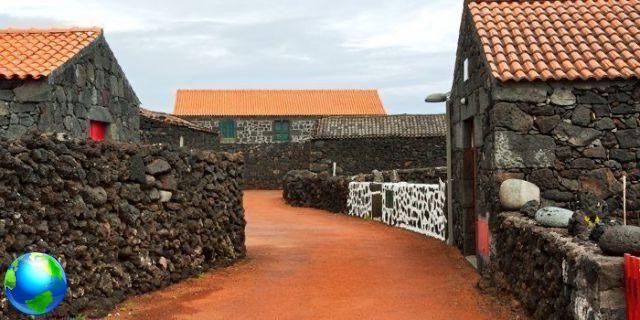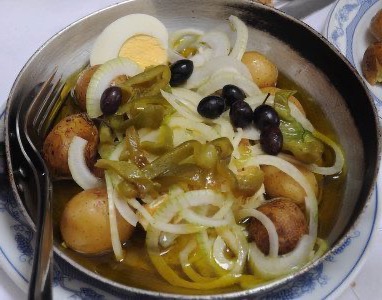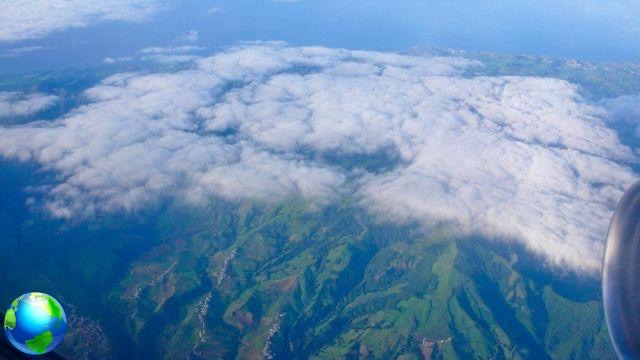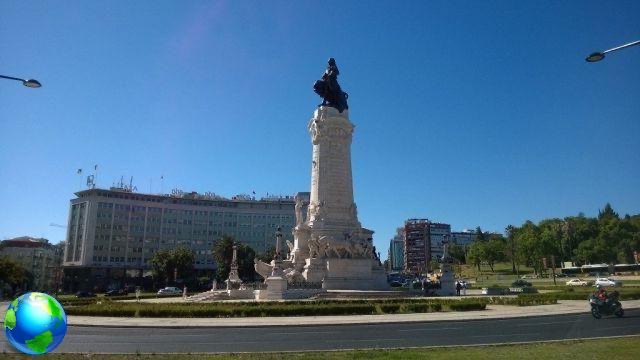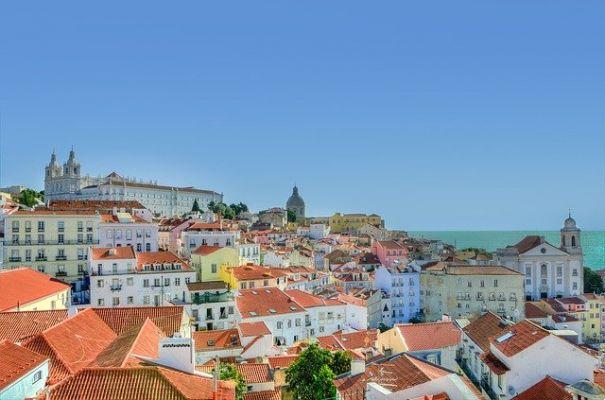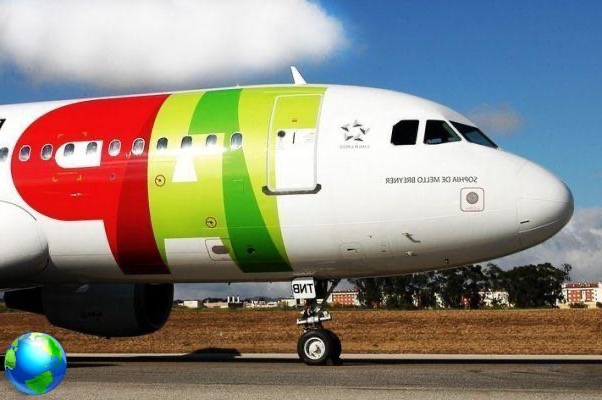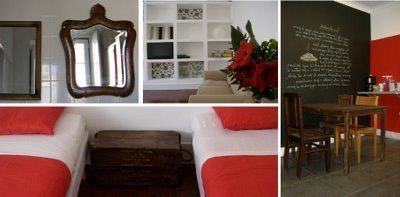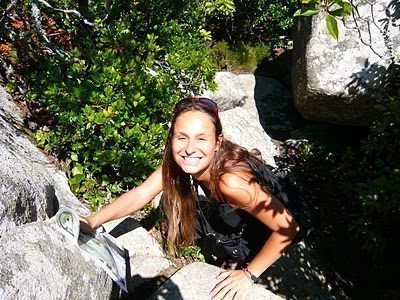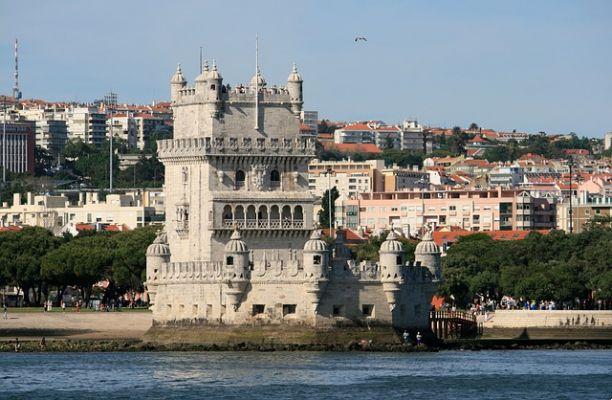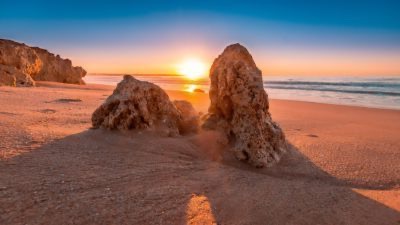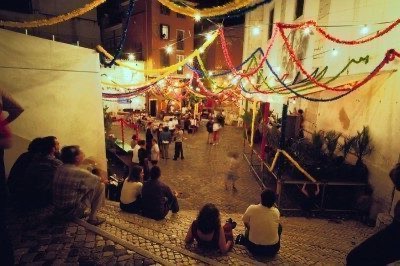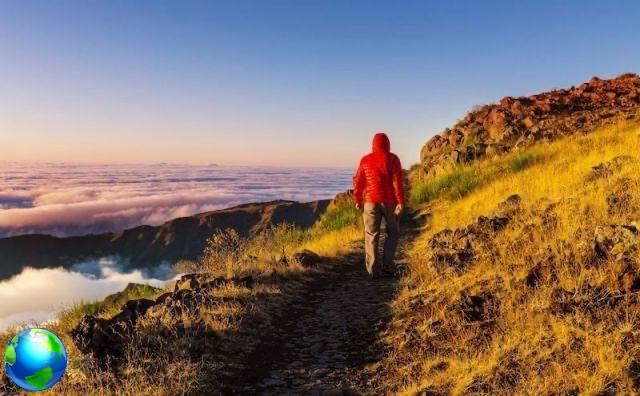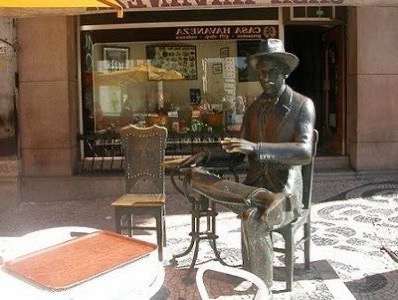After falling madly in love with Azores and Canaries, I could not close the circle by visiting Madeira Island, the last pearl of the Atlantic that I was missing. This small volcanic archipelago comprises 4 islands (only 2 inhabited: Madeira Island and the baby Porto Santo) which are located off the north-western coasts of Africa and constitute an autonomous region of Portugal. Like the Azores and the Canaries, too Madeira is an island of eternal spring with a decidedly subtropical climate and nature. The comparison with the “older sisters” comes spontaneously, even if Madeira has its own identity and history. From 1807 to 1814 the archipelago was in fact occupied by the United Kingdom and this link is still visible today in many things. In Madeira everyone speaks perfect English and the island is the retreat for many English people (retired or not). The thing that struck me the most when arriving in Madeira is its urbanization and its infrastructures; despite the small size of the island, Funchal it is a very large city (it has more than 100.000 inhabitants), whose buildings occupy the ridge of several mountains on the southeast coast of the island. However, there are no major building havoc, almost zero eco-monsters, and it is very clear that it is a city where you can find everything and with a decidedly high quality of life. With the exception of Funchal, however, all the other places on the island are small towns (some really a handful of houses) nestled in one wild and luxuriant nature. To avoid going up and down from the mountains that cover practically the whole island, dozens of tunnels have been dug that connect the opposite points of the island in about 1 hour. Similarly, there are many cable cars that allow you to reach the coasts from the cliffs overlooking the sea. To go trekking in the center of Madeira you will necessarily have to climb the mountains and in some places you need to have some experience to drive on the super steep roads outside Funchal (but there are some tough ones in the city too). Like the Azores, too Madeira has few beaches (very few of sand, the largest and most beautiful are in Porto Santo), but there are many natural pools where you can swim. Considering this and other factors, I would say that Madeira is perfect for those who love active holidays (there are many and beautiful trekking, trails, rivers for canyoning) and water sports (such as surfing, diving, etc.), but do not mind the cultural offer and all the comforts that a large (and beautiful) city can offer.
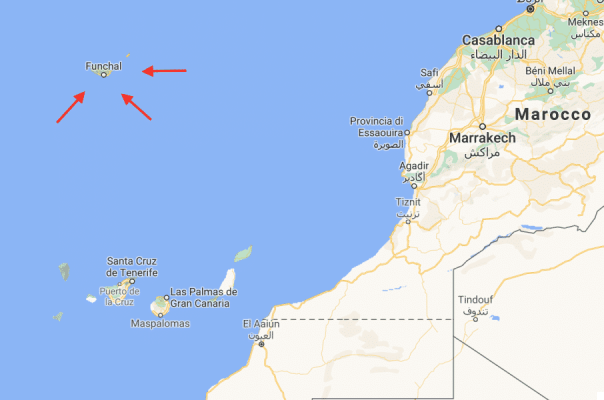
How to get to Madeira
There are no direct flights from Spain to reach Madeira, but you will necessarily have to make a stopover in Lisbon or Porto. From Lisbon the flight is then about 1h and 40 ', from Porto a little more. Among other things, the TAP (the Portuguese national airline) allows you to make a long stop-over in Lisbon or Porto (even for several days), at no additional cost, so you can take advantage of it to add a few days in the city to your trip to Madeira. Madeira Airport is named after Cristiano Ronaldo (but can you?!?) And is a great work from an architectural point of view. The track is suspended over the sea and supported by large reinforced concrete pylons. The landing and take-off will not be too pleasing to the faint of heart (like me) because the plane makes a sharp turn very shortly before landing. L'Cristiano Ronaldo airport it is located 19 km from the center of Funchal; to reach the center there is a bus service, or you can take Bolt (a competitor of Uber, which costs even less - about 19/20 euros) or book a transfer from this site (very convenient especially if you arrive late in the evening).
when to walk the wood
Madeira has a tropical climate, with mild winters (even in January temperatures are around 18-20 degrees) and hot summers, but the right one (rarely exceeding 30 °). Between November and February it can rain a little, then in spring / summer the rainfall is really minimal. Basically you can always go there. Among the most heartfelt events on the island are the Carnival (as in the Canaries) and the New Year.
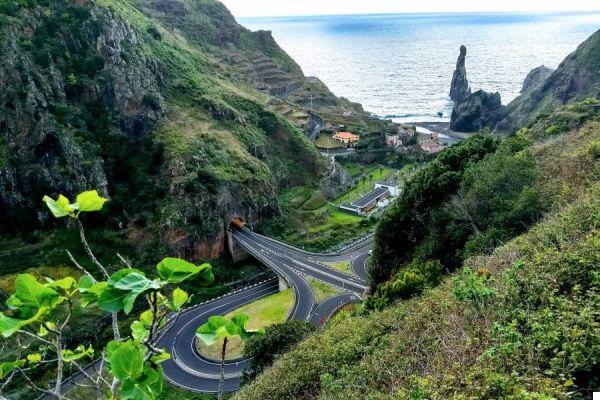
Health insurance is recommended
Being in Europe, as Spanish citizens we have the right to health care, but there are specific conditions and ceilings. My advice is to still take a classic medical-luggage insurance that can cover you during the trip, even for Covid-19. I am very happy with many insurance companies, a site that compares the policies of different companies and proposes the most convenient policy for that particular trip. To do this you will have to enter the data relating to your trip and they will send you an email with the best proposal that you can then buy directly online (!!!). All travel insurances also cover medical assistance in the event of a coronavirus infection, including testing if necessary. There is also coverage for the extension of the stay in the hotel due to the quarantine. Likewise, the trip cancellation guarantee includes coverage for illness or death of the traveler or a family member due to COVID-19.
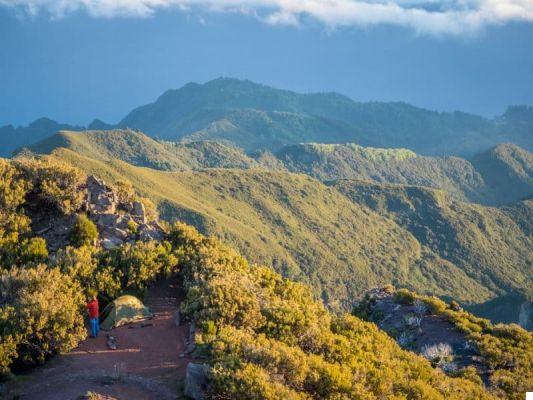
How to get around Madeira
The best way to get around Madeira is by car. With a rental car you can explore the island better and be more free. The roads are beautiful except for some really challenging climbs. For car rental I always use the Rentalcars website and in Madeira I chose the Guerin company (a Portuguese company), with which I got along well. To avoid scams, however, remember to always check the votes and reviews that users give to the various car rental companies. You can find them on the Rentalcars website itself, but you can also double check on Trustpilot. Some companies offer bargain prices but the service is bad. If you park in the parking lots with parking meters and time, always pay for it because they get fines even if they are exceeded by a few minutes (warned is saved!).
Where to sleep in Madeira
Given the small size of the island, you can easily base yourself in one place to explore the rest of the island in a day. If you don't want to give up a wide choice of restaurants and clubs, my advice is to sleeping in Funchal. The only hassle concerns the parking, if you decide to sleep in the center, but you can get around by using the paid parking lots like this, very convenient, which is located right on the seafront and costs 10 euros per day. The other towns are really small. However, if you want to spend 1-2 days in the middle of nature, I recommend you sleep in Rabaçal Nature Spot and / or to the refuge located under the peak of the Pico Ruvio (which is called shelter house, see paragraph below).
- Five Design Rooftop by Storytellers (Funchal): I slept in these super nice apartments in the center of Funchal. The services are hotel-like (daily cleaning and breakfast included) and the apartments are really nice (I was on the top floor and I had an amazing view over all Funchal!). There is also a nice terrace on the top floor. Super recommended!
- Quinta da Penha de Franca (Funchal): this property is also very nice and central, it is surrounded by a large garden and has 2 outdoor swimming pools with salt water, 1 of which is heated (both with sea view)
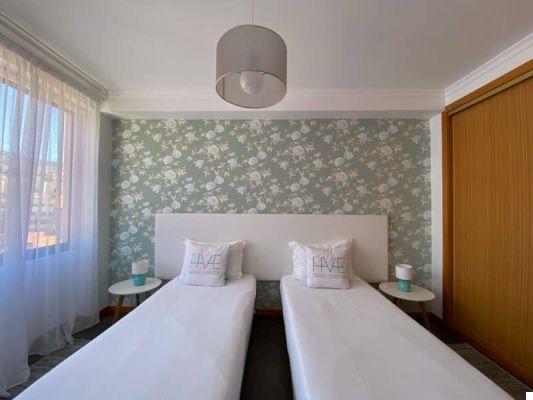
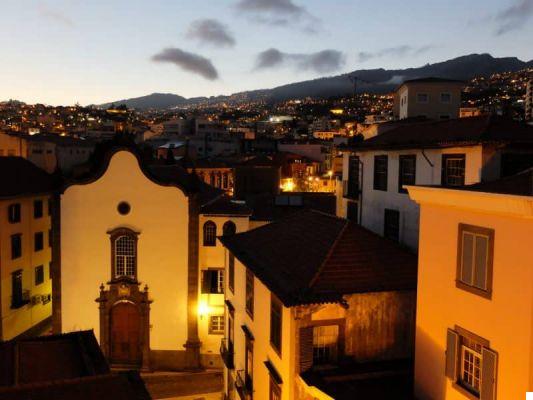
What to see and what to do in Madeira
Funchal
Funchal is definitely one of the things to see in Madeira. The capital of the island was really a surprise for me, I honestly did not expect to find such a large and fascinating city. If you want to visit it well, calculate at least one day, but if you want, also two. Among the things not to be missed in Funchal there are certainly:
- Old Town: the historic center is located immediately behind the Marina. Here is the Sé Cathedral, several pedestrian streets with beautiful squares, the Jardim Municipal and the Parque de Santa Caterina (both with lush vegetation to say the least).
- Old Town: the most fascinating area of Funchal, however, is the old fishermen's quarter, abandoned until recently and now redeveloped. The centerpiece is Rua de Santa Maria, a pedestrian street full of bars, restaurants and street-art (for the Open Doors Art Project you will see lots of doors painted by local artists). Here you can also find the Mercado dos Lavadores (you will see tropical fruit of all kinds) and the Fortaleza de Santiago, in front of which many locals go for a swim.
- Monte Palace Tropical Garden e Jardins Botanicos: from the Zona Velha you can also take the cable car (the cable car, nice but very expensive, 11 euros one way) to reach Monte, a neighborhood full of aristocratic villas and residences of the wealthiest families in the city. Worth seeing are certainly the Monte Palace, the former residence (with an immense tropical garden) of the British consul, and, just below, the Botanical Gardens.
- Case Museum: in Funchal there are no must-see museums (at least by our standards), but if you are a lover of historic houses like me you will surely like the Casa Museo Frederico de Freitas, and Universo de Memorias Joao Carlos Abreu. Quinta das Cruces, praised by the Lonely Planet and other guides, in my opinion it is really nothing special!
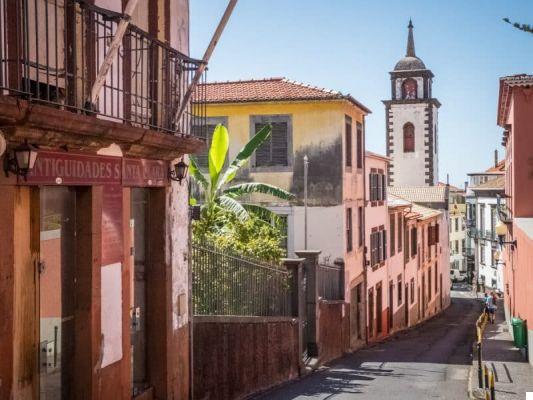
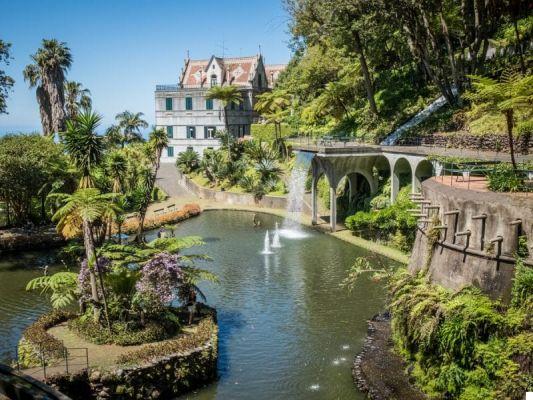
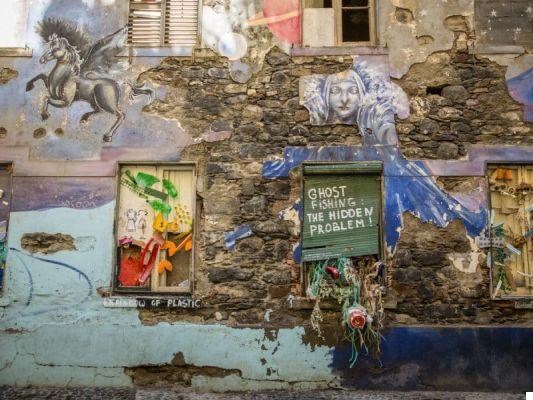
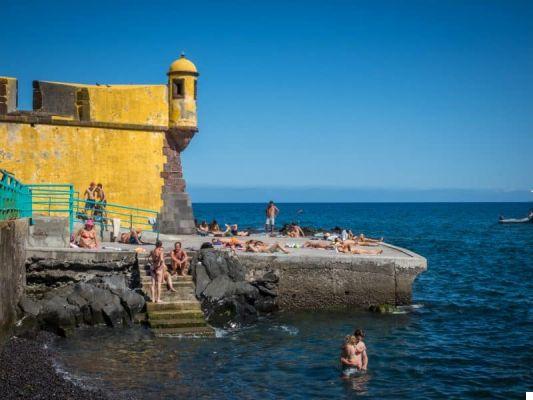
Ponta de São Lourenço
The eastern end of Madeira is occupied by the peninsula of San Lorenzo, by far one of the most scenic and photographed spots on the island. The best way to explore it is to follow the path that starts from Baia d'Abra and reaches the tip (path PR8 - 8 km round trip, about 5h). Unlike the rest of the island, Ponta de São Lourenço is decidedly arid; the peninsula is beaten by winds coming from the north and you will encounter only small shrubs. The whole area is a nature reserve and the only building there is that of Sardine Wharf, the former holiday home of Manuel Bettencourt, which now serves as a welcome center and refreshment point (and you can eat well!). Just before reaching Cais do Sardinha, on the right, you can go down to a nice little bay where you can swim. The landscapes here are magnificent, especially when you reach Furad's Hillor, the slope that delimits the accessible stretch of the peninsula. From here above the view sweeps 360 °, on the peninsula, on the islets opposite and on Porto Santo.
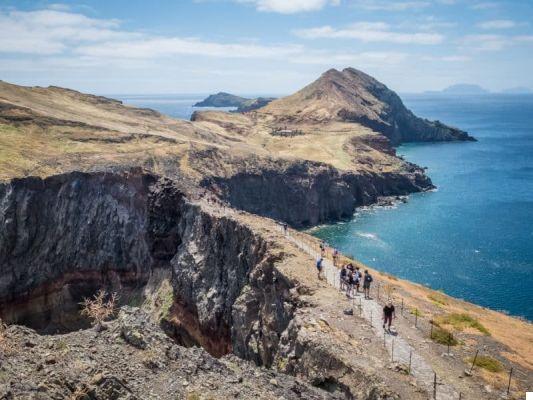
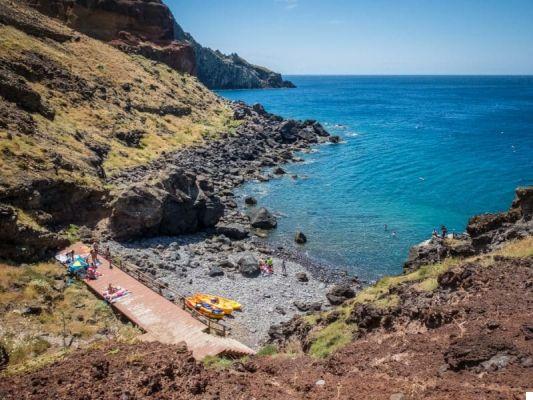
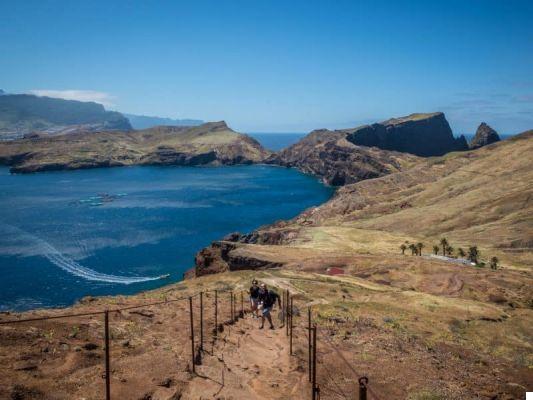
Machico, Cristo Rei and Praia da Garajau
Returning to Funchal from Ponta de São Lourenço it is worth making a couple of stops. The first a Machico, especially if you want to see one of the few golden sandy beaches on the island. The sand of this beach was transported from Morocco and is protected by breakwaters (it is an equipped beach where you will find everything). Closer to Funchal is the village of Tern, perched on the side of a cliff. Immediately below is the King Christ, the miniature version of Rio's Christ the Redeemer with a nice path that descends to the beach below (Garajau beach). If you don't feel like walking this long road that goes all the way down, you can use a cable car. The beach is very nice and there is also a bar.
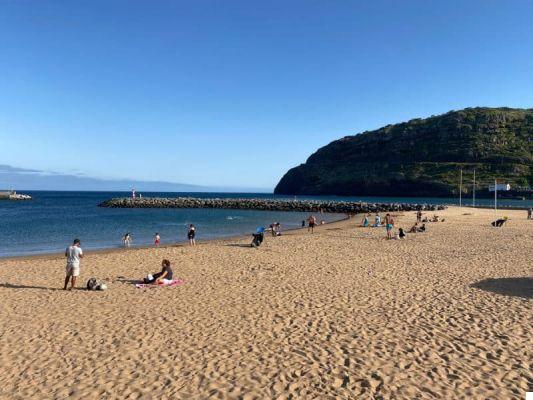
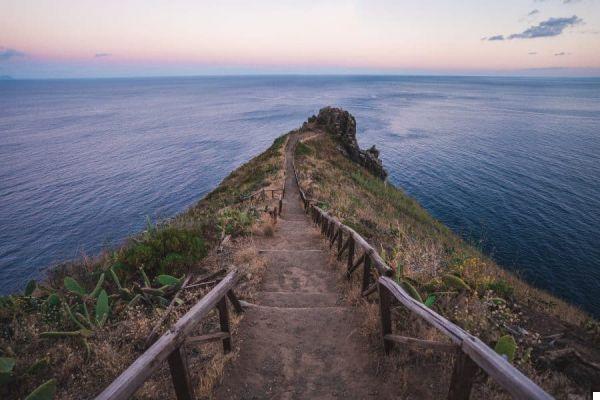
Torrentism and trekking to Ribeiro Frio
Among the things to see in Madeira there is certainly the mountainous area of Cold river (aka Cold River). Nestled in the mountains, Ribeiro Frio is the starting point of several trekking in the levadas (the complex system of irrigation channels typical of Madeira) and some canyoning routes (canyoning). Speaking of canyoning, if you love this type of activity, I recommend that you absolutely do it in Madeira! I did it (here you can find all the info and you can book) and I enjoyed it very much. It is within everyone's reach and the natural landscapes that can be seen are very beautiful. From Ribeiro Frio there is also an easy and well marked path of 1,5 km to reach Balcoes, one of the most beautiful viewpoints on the island. If you have more time, the other trek to do is that of Lavada do Furado (path PR10), 11 km long (about 4h), which also crosses a laurisilva forest (yes, also in Madeira there is laurisilva as in Tenerife and El Hierro!). To get precise information on all the trekking on the island, you should still go to the Uff. of Funchal Tourism; there they will give you all the brochures and detailed maps (they are also very well done!).
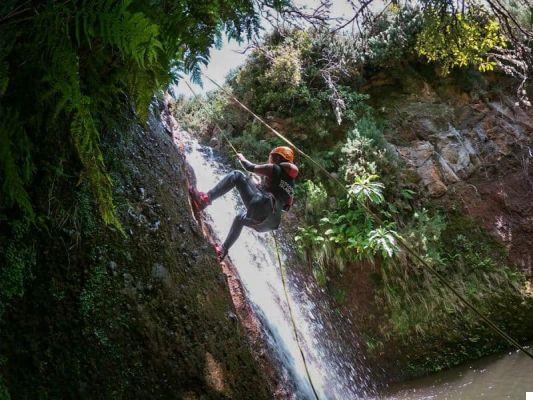
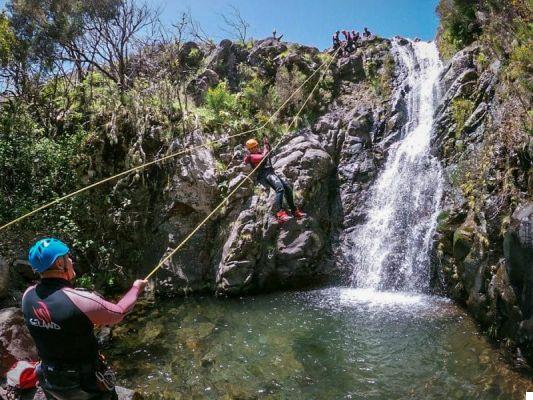
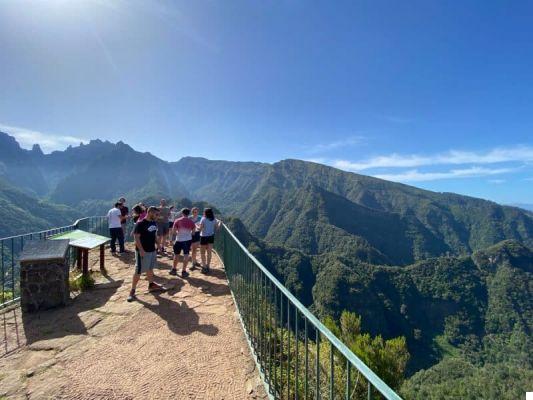
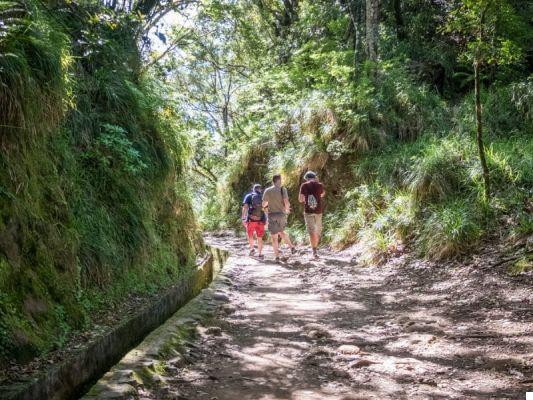
Pico Arieiro and Pico Ruvio
If you asked me to choose just one thing to see in Madeira I would tell you these two peaks, or rather, the path that unites them. The 7 km route that goes from Pico Arieiro (1818 m) to Pico Ruvio (1862), connecting the 2 highest peaks on the island, it is by far one of the most beautiful trails I have ever done !! The route winds through breathtaking views, stairs that seem to reach the sky, long tunnels that cut the mountains and overhanging views. The total height difference is about 550 meters, mostly made up of steps that split the legs enough and is not suitable for those suffering from vertigo. Considering that you stop to take pictures every moment, calculate at least 3h-3h30 'on the way out and 2-2h30' on the way back (the path is linear, so you will have to retrace it to return to collect the car at the Pico Arieiro car park. very valid alternative (which is what I did) is to arrive at Pico Ruvio in the late afternoon, see the sunset from the summit, sleep in the only refuge there is (Casa do Abrigo), see the sunrise and then leave for Pico Arieiro. The only thing is that you will have to book the refuge a little in advance because it only has 12-13 beds (it has several rooms for 2-3-4 pax, all with sheets and blankets, 15 euros per person for 1 night) Their contacts for booking are: [email protected], Tel: 291 572 124, Cell: 960 296 224/962 560 029.
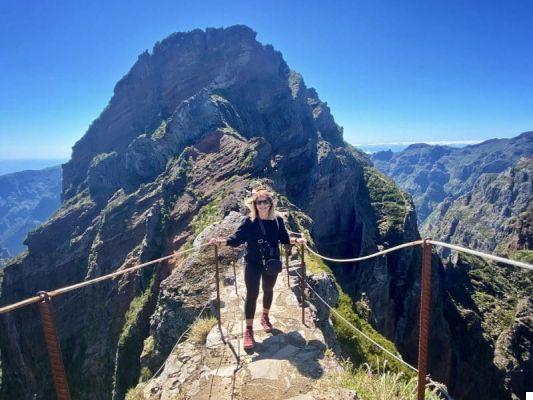
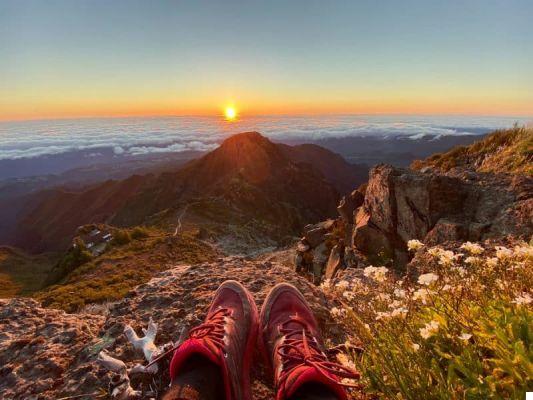
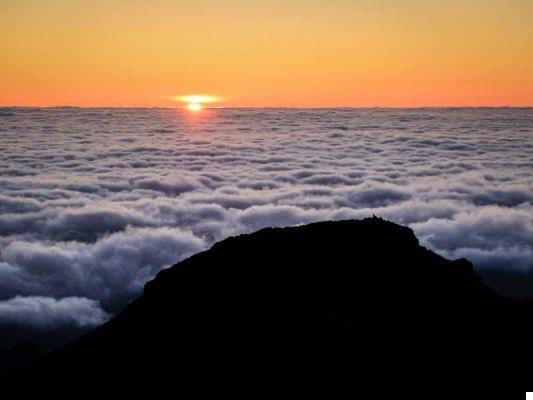
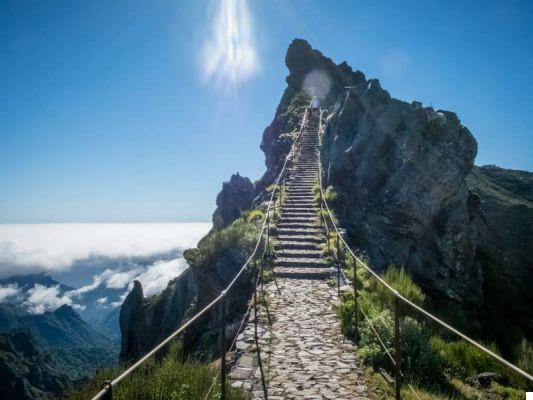
Natural pools of Seixal and Porto Moniz
As in the Azores, the most beautiful places to swim in Madeira are the natural pools. The most scenic of the island are located in the north-western end, a Seixal and Porto Moniz. Seixal has both swimming pools (normal, nothing special), and a beautiful swimming beach that reminded me a lot of the beaches of the north coast of Tenerife (as well as those of Hawaii!). The swimming pools of Porto Moniz, on the other hand, are truly splendid! They are really well done and are very scenic. Between Seixal and Porto Moniz is the micro-village of Ribeira da Janela with a beautiful large pebble beach (where you can't swim) in front of a volcanic rock wall.
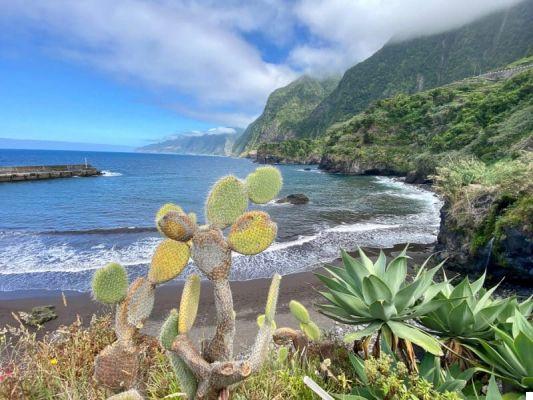
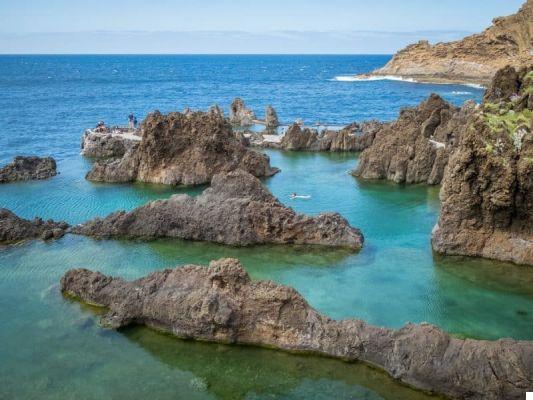
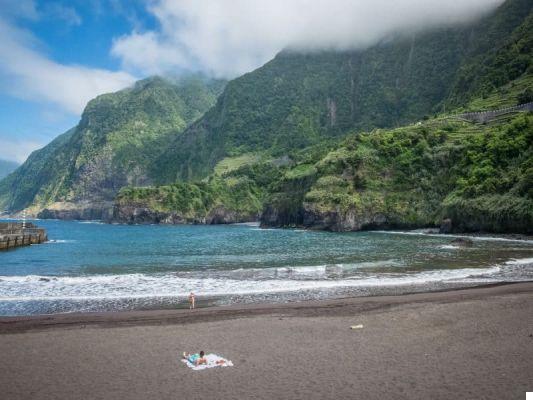
Ponta do Pargo and Achada da Cruz
The southwestern tip is instead occupied by Ponta do Pargo, another of the things to see for sure in Madeira. From the village of the same name, there is a path that leads to the Lighthouse (but you can also get there by car) which offers a magnificent view of the sheer cliffs and the Atlantic. Then moving north, climbing along the coast that reaches Porto Moniz, it is also worth stopping at find of the cross. From this point, which is located on top of a high cliff, you can go down to the sea either on foot (with a nice long and steep path) or with a small cableway. Once down there is a very nice super panoramic path, especially at sunset.
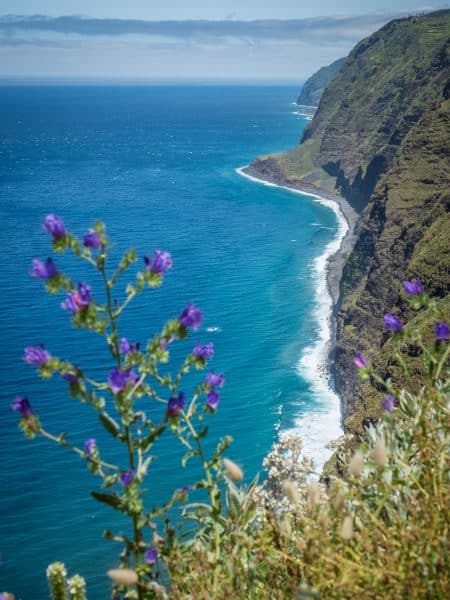
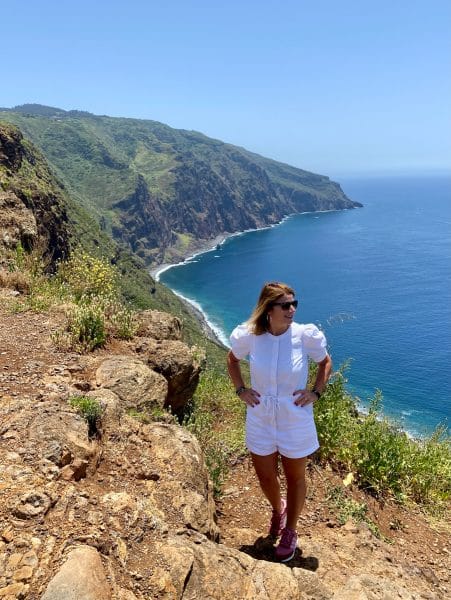
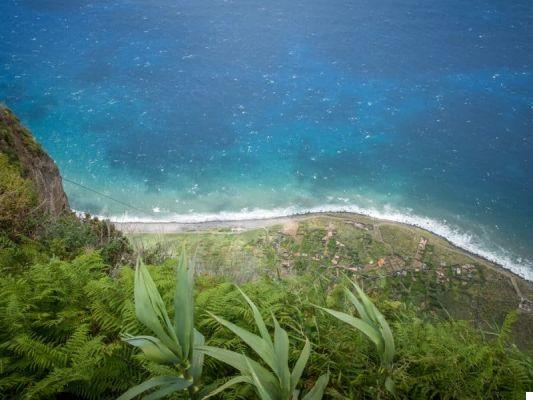
Cabo Girao and the south coast
The south coast of Madeira is the warmest and sunniest coast. To see there are several towns like Paul of the Sea, the surfing capital of the island, Calheta with 2 symmetrical white sand beaches imported from Africa, e Ponta do Sol, the sunniest village on the island. Not far away there is also the hippie beach of Calhau da Lapa, with some houses built along the rock. Apart from this, the beach is not particularly beautiful and it is not easy to swim, so I don't know if I would go back (also because you can only get there on foot with a decent staircase). Near Ponta do Sol there is also a very popular spot on the island on Instagram, namely the waterfall that passes on the old coastal road (see photo below). Finally, closer to Funchal, there is Cabo Girao, with a transparent viewing platform suspended in the void, from the highest cliff on the island (580 meters). Refrain faint of heart!
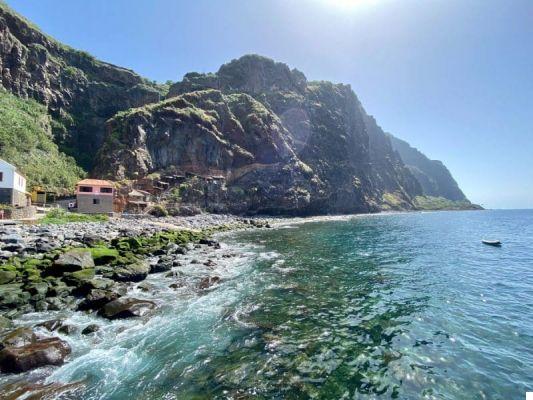
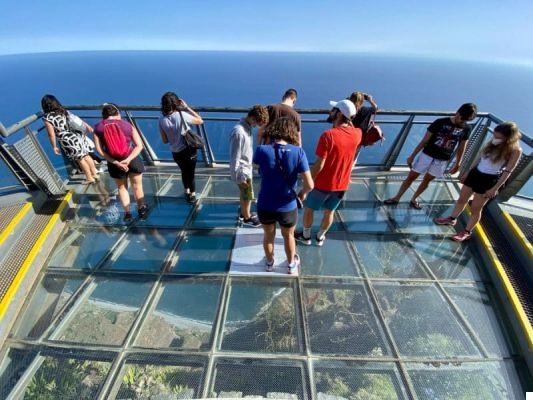
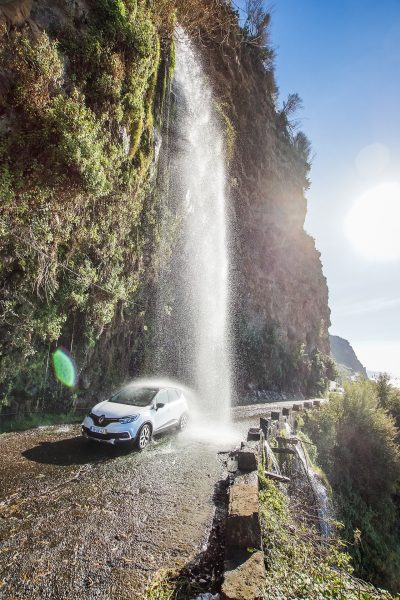
Levada do Caldeirao Verde and Levada das 25 Fontes
One of the peculiarities of Madeira is undoubtedly the levadas system (or irrigation canals). I had also seen them in the Azores, but they weren't as widespread. In Madeira, on the other hand, there is this very long complex of canals (we are talking about a network that is well over 2500 km long) which collects rainwater from the mountains of the interior and distributes it throughout the island to taps, fields and gardens. This same water also supplies hydroelectricity to homes and businesses. The trails that run alongside the levadas wind their way through the wildest of nature and have become one of the island's main attractions. Among the most beautiful trails there are certainly the Caldeirao Verde Levada (path PR9) and the Taken from 25 sources (PR6-PR6.1). The first starts from Queimadas and reaches (after 6,5 km one way) the Caldeirao Verde, a waterfall that flows from 100 meters in height surrounded by an imposing nature. The Levada das 25 fontes instead starts from Rabacal, a very beautiful spot on the island full of springs and waterfalls, where 3 levadas converge. For this path there are 2 variants; in both cases we are talking about 10 km between A / R. However, if you want to spend 1-2 days in the midst of nature and walk these paths with more tranquility, I recommend you sleep here, at Rabaçal Nature Spot, a true paradise.
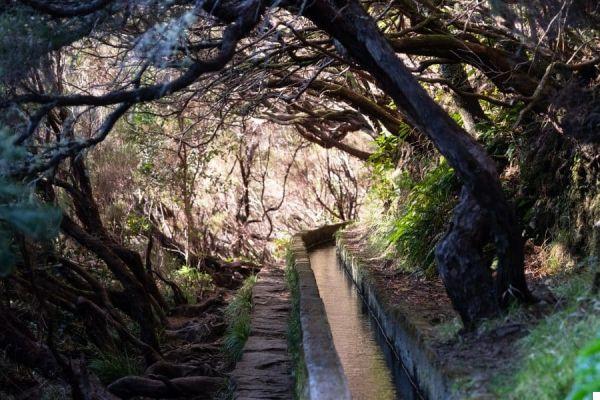
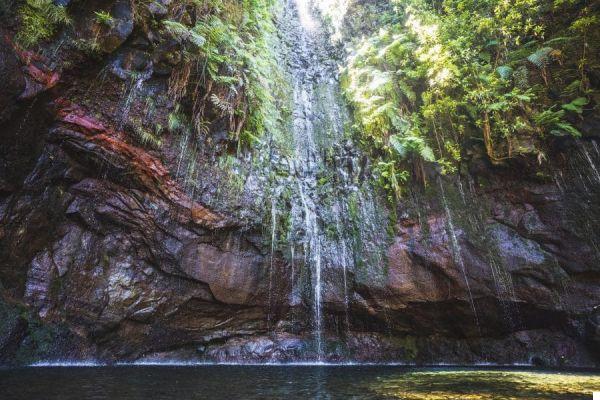
Other things to see (or do) in Madeira are:
- Cetacean sighting excursion by catamaran
- Excursion to swim with dolphins
- Cetacean sighting excursion at sunset
- Diving
- Excursion to Porto Santo
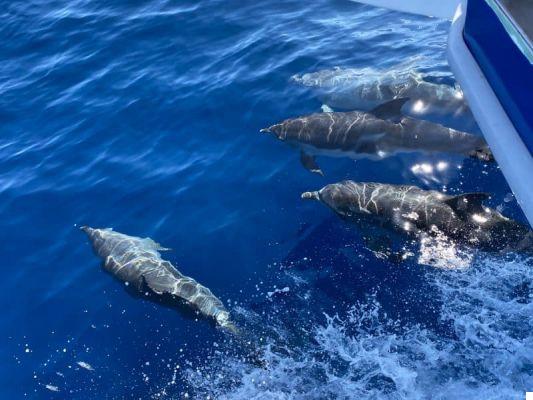
You might also be interested in these other articles I wrote about Portugal:
- Lisbon: what to see in 3 days
- Unusual Lisbon: 15 places to see to feel local
- Where to sleep in Lisbon: better neighborhoods and hotels
- How to organize a trip to the Azores: when to go, how and where
- Azores: what to see and what to do in these dream islands
- What to see in the Algarve: a road trip in southern Portugal
- Alentejo (Portugal): what to see




